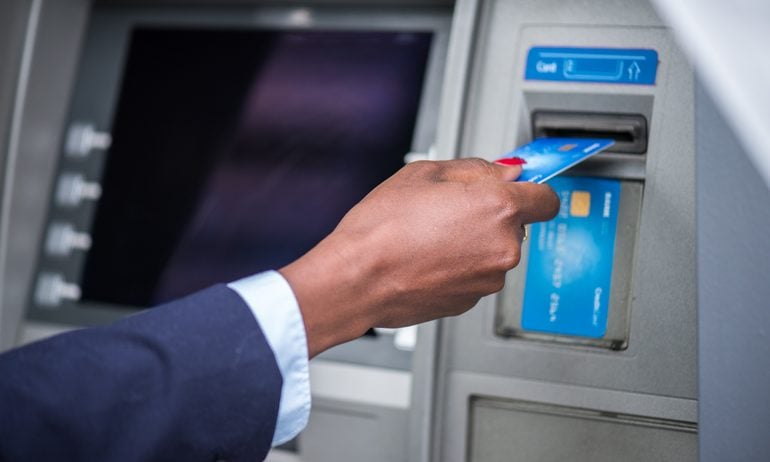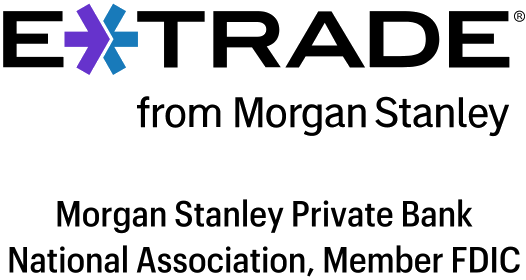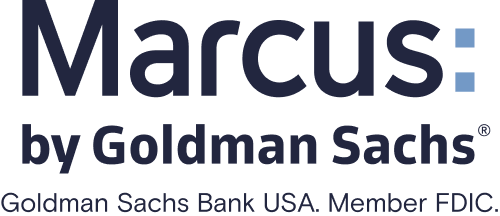Study: Checking Fees Average Almost $1,000 Over a Decade

Many, or all, of the products featured on this page are from our advertising partners who compensate us when you take certain actions on our website or click to take an action on their website. However, this does not influence our evaluations. Our opinions are our own. Here is a list of our partners and here's how we make money.
For Joelle Brown, writing three rent checks to her landlord before a long trip turned out to be a bad idea. She expected one check to get deposited each month, but her landlord cashed them all at once.
“I was in school at the time and was living off of loan money,” says Brown, who was then an undergraduate at a university in Vermont.
The deposited checks caused her account to drop below zero, but she didn’t know this for four days. By then, she had used her debit card to make additional transactions, leading to a total of $600 in overdraft fees.
And even worse: “It was right before Christmas,” she says.
Brown’s experience isn’t unique. About 30% of all checking account holders are hit with overdraft fees like Brown’s over the course of a year, according to a 2014 report by the Consumer Financial Protection Bureau. There are other bank fees that are higher, but overall, overdraft fees make up the majority of checking account costs.
NerdWallet looked at the average costs of overdraft and other fees over time, and found a higher price tag for a checking account than you might expect.
The average cost of monthly maintenance fees, ATM and account use fees, and overdraft and nonsufficient funds fees for a checking account is nearly $1,000 over a decade, according to a NerdWallet analysis of CFPB data. That average might seem low or high, depending on what types of fees you tend to get charged.
Switching to one of the most consumer-friendly checking accounts can cut two-thirds of that price tag, a NerdWallet analysis shows. There’s no obligation to stick with a fee-ridden checking account forever.
“Checking accounts are the keystone of American personal finance,” says Sean McQuay, credit and banking expert at NerdWallet. “My checking account is the center of my financial life. That’s where all my money goes in and out, so I need to trust my bank.
“When bank fees hit, that’s a signal that something’s gone sour,” McQuay says.
Read on for more about fees, the study findings and what you can do if you’re paying steep fees for your checking account.

Member FDIC
Discover® Cashback Debit

N/A
$0

Deposits are FDIC Insured
Chime® Checking Account

N/A
$0

Member FDIC
Varo Bank Account

N/A
$0

Member FDIC
E*TRADE Max-Rate Checking

3.00%
$15
Monthly maintenance fees: The sticker price
Explore a few bank websites, and you’ll likely see one cost disclosed across checking account options: the monthly maintenance fee, charged for simply having a checking account. It’s around $10 to $12 for the most basic checking account at the biggest U.S. banks.
Unlike other checking fees, there are usually ways to get this one waived, such as by keeping a certain average or minimum amount of money in the account each day, setting up a recurring direct deposit or using your debit card a certain number of times monthly.
ATM and account use fees: The one-off costs
Your bank may charge a fee for withdrawing cash at ATMs it doesn’t own, or for services such as buying money orders and sending wire transfers. These fees can range from a few bucks for the ATM withdrawals to over $50 for some international wire transfers. The costs for these services tend to be straightforward, and it’s usually easy to compare the fees from bank to bank.
There can be unexpected costs in the fine print, though. Banks usually require a sending fee for wire transfers, and there’s typically a fee to receive money that’s wired to you as well. ATM fees also can be tricky. Your bank can charge you for withdrawals at ATMs that are out of its network, $2.01 being the average fee nationally, but there can be a second fee from the ATM operator. The national average fee for that is $2.75, according to 2016 data from Informa Research Services in Calabasas, California.
Overdraft fees: The back-end expense
Overdraft and nonsufficient funds fees can come as a surprise if you don’t closely monitor your checking account. If you don’t have enough cash in your account and your bank has to help you cover a transaction, you’ll be charged an overdraft fee. If your balance is already below zero and your bank doesn’t cover you, you’ll get a nonsufficient funds fee.
For ATM and debit card transactions, you must opt into overdraft coverage. However, people don’t always keep track of whether they’ve done so. About 52% of people who have incurred an overdraft fee don’t remember saying yes to such coverage, according to a survey by the Pew Charitable Trusts.
The median overdraft fee is $34, according to the CFPB. Once you have an overdraft, you can get hit by another fee, called an extended overdraft fee, if you don’t correct the negative balance within several days. The median cost for this is $15. And any debit transaction on an overdrawn account — say, a debit card purchase — can lead to additional overdraft charges. Once seen as a mere courtesy service, overdraft coverage is now a feature that can lead to spiraling debt for consumers, while being a major source of income for banks.
Consumers have an average of about two overdrafts per year, but in practice a minority of bank consumers, 18%, account for the majority of overdrafts. This group tends to make less than the national median income of $54,000, and for them, paying overdrafts can mean the equivalent of losing a week’s worth of wages over the course of a year, according to another recent study from the Pew Charitable Trusts, a public policy group that studies consumer banking.
Key findings
Overdraft fees easily overshadow the two other types of fees, although consumers’ experiences with them vary. The more financially vulnerable tend to be the most affected, as Pew’s studies show. Monthly costs for overdraft and nonsufficient funds fees average $5.21 per person, compared with $1.66 for ATM and account use fees and $1.28 for average monthly maintenance fees, according to the CFPB report that NerdWallet analyzed. The averages come from 2 million checking account histories, which included accounts from consumers who had these fees waived.
The overdraft fee average is more than three times as high as the next most expensive fee, $1.66 for average monthly cost of ATM and account use. Average monthly maintenance fees cost $1.28. All these fees add up to $97.80 in one year, $978.00 in 10 and $1,956 in 20.
But there are cheaper checking accounts out there, typically from online-only banks or credit unions. These more consumer-friendly accounts that NerdWallet recommends largely don’t have ATM or monthly fees. Some have overdraft fees, but they tend to be much lower than the $34 median cost.
» MORE: Best credit unions
So why don’t more consumers compare checking accounts like grocery store items?
The trouble with comparing accounts by fees
Some costs are unpredictable
A checking account houses a bundle of financial services, from ATM withdrawals to overdraft protection, but there’s no one-size-fits-all. Some services become necessary as your circumstances change, and fees may be involved. Say, for instance, that you belong to a bank with a convenient ATM network, but then you move to a different state and find yourself paying through the nose on out-of-network ATM fees. Or perhaps you land a new job that requires international travel and you start getting charged fees for international debit card transactions. (Some banks wouldn’t charge for the service.)
Overdraft programs and alternatives, such as overdraft protection transfers and overdraft lines of credit, can be harder to compare. Banks have different daily maximums for overdraft fees. And if you don’t know whether you’ll need an overdraft service someday, it can be hard to prioritize a cheap option when there are many other checking services to compare.
“Consumers can’t shop [between financial institutions] based on how many overdrafts they’ll get, so they don’t know how much their checking account will cost them,” says Thaddeus King, officer on the consumer banking project at The Pew Charitable Trusts in Washington, D.C.
» MORE: How to choose a bank
Disclosures get long and complicated
The median length of a bank account disclosure, including fee schedules, is 40 pages long. Pew cites this number based on 2015 analysis, and Joy Hackenbracht, research officer at Pew, confirms that the number hasn’t changed in 2016. Financial institutions must abide by compliance requirements when they disclose information, but that doesn’t mean they need to offer easy-to-read summaries of all the key points and fees.
Banks don’t share fees the same way
Length isn’t the only concern. There isn’t a uniform format that’s legally required for disclosures. Pew created a summary disclosure box that various banks have adopted, but inconsistencies crop up even with that format. In addition, not all fees go by the same names across financial institutions. Some banks, for instance, call an inactivity fee a “dormant account fee” and overdraft coverage “courtesy pay.”
In the same 2015 study, Pew analyzed over 3,700 consumers’ experiences with bank fee disclosures by presenting two sets of fees from different bank websites that were slightly different in formatting and another two sets that looked identical except the fee amounts.
“For the two disclosures that were identical, it boosted consumers’ confidence and it was easier for them to identify fees,” says Hackenbracht. “They spent less time pulling out key information.”
A future with clearer fees
When banks opened up overdraft services to consumers in the 1990s, they were chasing an opportunity.
“The formalization and automation of overdraft services expanded in the 1990s and 2000s … [and] provided the fee income that allowed the rise of free checking,” says G. Michael Flores, CEO of Bretton Woods, Inc. a financial research and advisory firm in St. Simons Island, Georgia.
» MORE: Best free checking accounts
The era of the “free” checking account has mostly passed, and overdraft fees are more regulated now. But more changes are coming.
“We live in a world where there’s going to be more and more data and info available,” says Jonathan Zinman, professor of economics at Dartmouth College in Hanover, New Hampshire. “Regulatory pressure and increasing consumer awareness will continue to push financial service providers in the direction of more transparent pricing.”
While the large fees on occasional transactions like overdrafts may drop, Zinman says, there may be more costs, though relatively modest ones, on common services like ATM withdrawals.
As more banks lay out their fees in a clear and uniform fashion, the easier it will be for consumers to compare accounts and know what they’re paying for.
How to save money now
You don’t have to wait for new laws to better understand and reduce the cost of having a checking account. Here are a few strategies.
Set up alerts for low balances. You can typically set up email and text notifications through online banking, choosing the minimum you want to keep in your account. This will help prevent you from overdrawing or incurring a monthly fee if your bank has a minimum daily balance requirement.
Find ways to avoid ATM fees. For example, get cash back at places like grocery stores when you pay with a debit card and select “debit.” Stick to ATMs within your bank’s network, which you can generally find using your bank’s online ATM locator or its mobile app.
Opt out of overdraft coverage. Review your current checking account to see if you’re signed up for any debit card and ATM coverage. If you’ve struggled with overdrafts in the past, decline the service and see if a cheaper alternative like overdraft protection or overdraft line of credit is available instead. Or go without any overdraft-related service at all, and let transactions be declined if you’re short on funds in your checking.
Find a financial institution with few fees, including low or no overdraft fees. Online-only banks, brokerage firms, community banks and credit unions tend to offer checking accounts with lower fees than national banks. Compare overdraft fees across financial institutions to see what works for you. Look for accounts that don’t have monthly maintenance fees or that offer easy ways to avoid them. If no options appeal to you, consider using a prepaid debit card with low fees and no overdraft feature.
“If you’re regularly hit with bank fees, taking the time to find the right bank can easily save you hundreds of dollars over a few years,” says NerdWallet’s Sean McQuay.
For Joelle Brown, paying $600 in fees was enough to convince her to switch banks soon after her overdraft incident. On the advice of a friend, she chose an online-only bank that gives ATM fee reimbursements and doesn’t charge monthly maintenance or extended overdraft fees. She still banks there today.
“I haven’t had any major problems with them,” she says.
NerdWallet data analyst Sreekar Jasthi contributed to this study.
METHODOLOGY
To calculate the average cost of a checking account, we used the Consumer Financial Protection Bureau’s “Data Point: Checking Account Overdraft” from 2014, the most recent data available. The CFPB looked at 2 million checking accounts, which included ones where fees were waived. We looked at the average monthly cost of overdraft and nonsufficient funds fees, ATM and account use fees and monthly maintenance fees. From the same report, we incorporated data points from Table 3 on overdraft frequency to figure out the average number of overdrafts consumers experience per year (2.07 occurrences). We multiplied the fees’ average monthly costs by various time periods to see the total cost in a year, 10 years and 20 years.
We incorporated NerdWallet data for those same average monthly fee costs and did the same calculations noted above for NerdWallet-recommended accounts, including using the same average frequency of overdrafts a year.
The analysis also included data from the 2013 FDIC National Survey of Unbanked and Underbanked Households, the most recent full set of data available. We used it to figure out the number of households with checking accounts and found the total average account costs for all Americans with checking accounts for one year, 10 years and 20 years.











